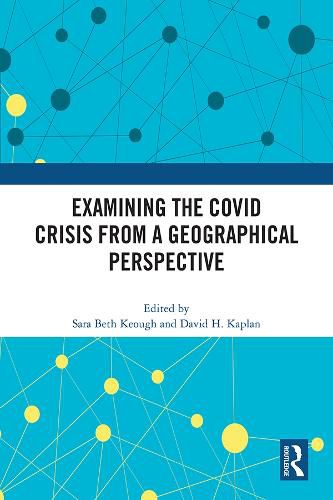Readings Newsletter
Become a Readings Member to make your shopping experience even easier.
Sign in or sign up for free!
You’re not far away from qualifying for FREE standard shipping within Australia
You’ve qualified for FREE standard shipping within Australia
The cart is loading…






This book presents several perspectives on the COVID-19 crisis as it impacted the United States, focusing on policies, practices, and patterns. It considers the relationship between government policies and neo-liberalism, (anti)federalism, economies of scale, and material culture.
The COVID-19 crisis became the primary current event in the United States in March 2020 and continued for several years. In the early days of the crisis, the United States lacked a cohesive, comprehensive approach to combating its spread. As a result, the pandemic was experienced differently in different parts of the United States and at different scales. The chapters in this volume include both quantitative and qualitative explorations of the pandemic as it occurred in the United States. Collectively, they help the reader to better understand this geographically salient issue and provide lessons to learn from so as to improve upon responses to crises in the future.
This book will be of interest to students and researchers of Geography, Sociology, Political Science, and Economics with an interest in United States and the socio-political effects of the COVID-19 pandemic. The chapters in this book were originally published as a special issue of Geographical Review.
$9.00 standard shipping within Australia
FREE standard shipping within Australia for orders over $100.00
Express & International shipping calculated at checkout
This book presents several perspectives on the COVID-19 crisis as it impacted the United States, focusing on policies, practices, and patterns. It considers the relationship between government policies and neo-liberalism, (anti)federalism, economies of scale, and material culture.
The COVID-19 crisis became the primary current event in the United States in March 2020 and continued for several years. In the early days of the crisis, the United States lacked a cohesive, comprehensive approach to combating its spread. As a result, the pandemic was experienced differently in different parts of the United States and at different scales. The chapters in this volume include both quantitative and qualitative explorations of the pandemic as it occurred in the United States. Collectively, they help the reader to better understand this geographically salient issue and provide lessons to learn from so as to improve upon responses to crises in the future.
This book will be of interest to students and researchers of Geography, Sociology, Political Science, and Economics with an interest in United States and the socio-political effects of the COVID-19 pandemic. The chapters in this book were originally published as a special issue of Geographical Review.